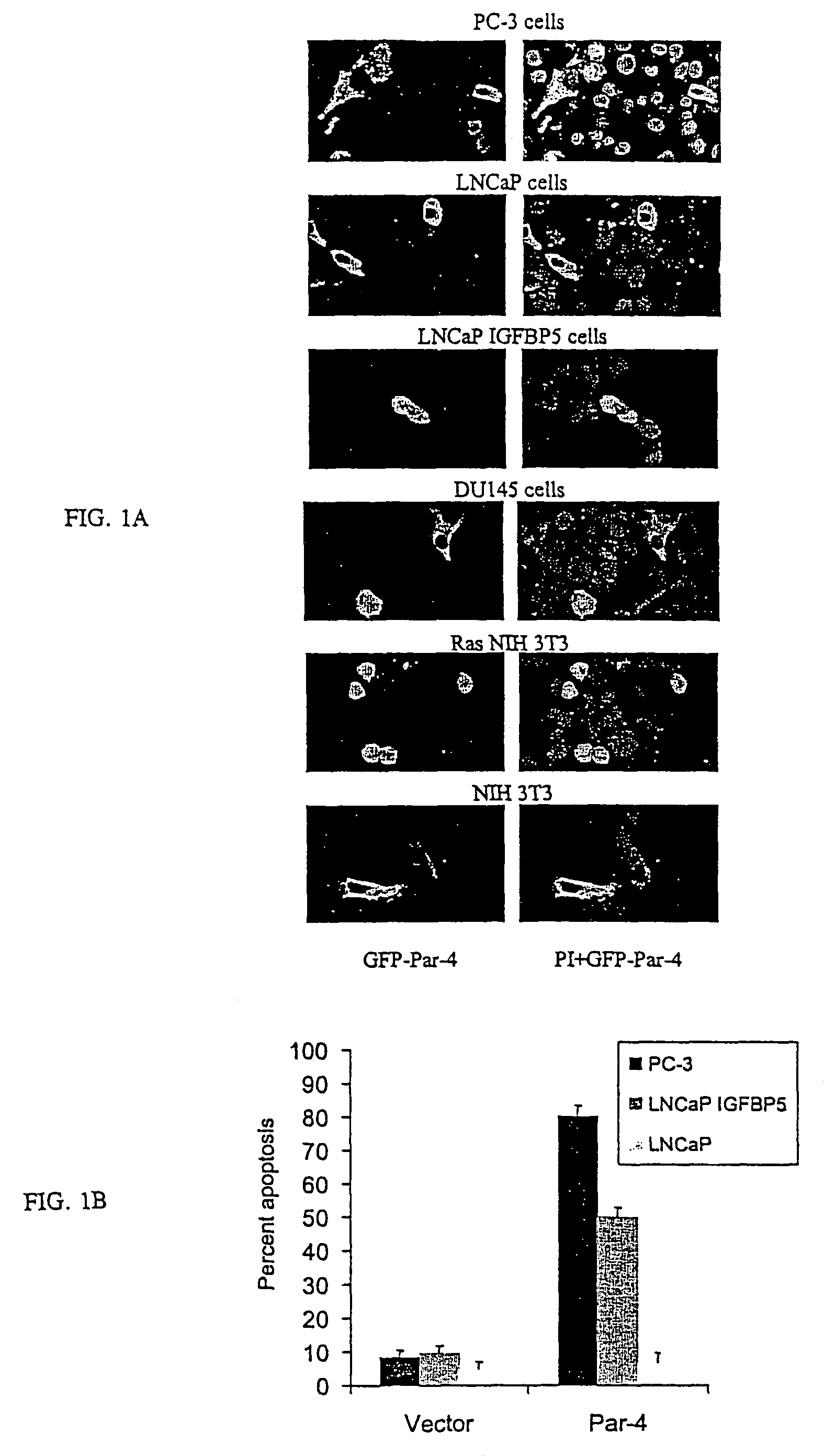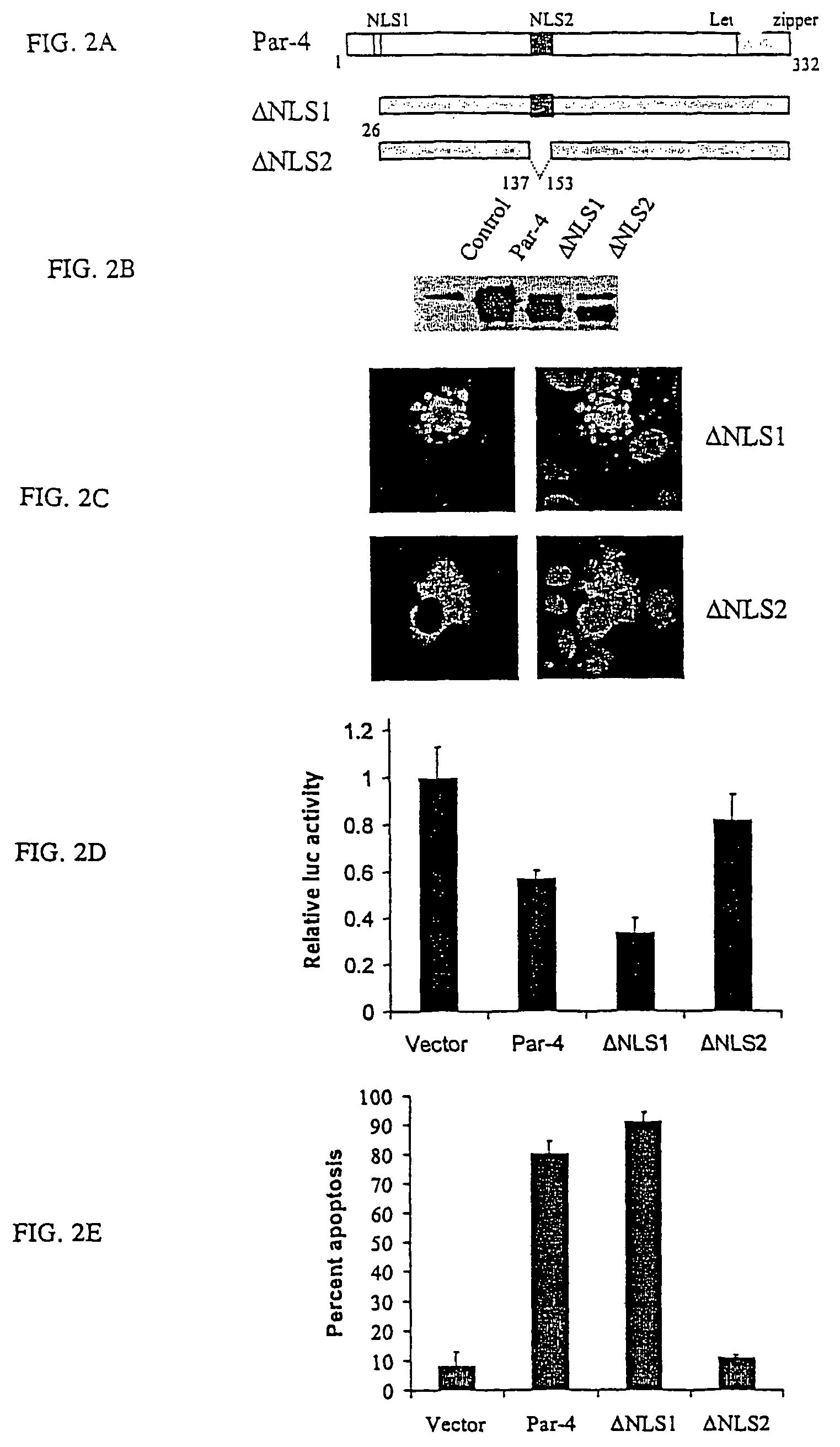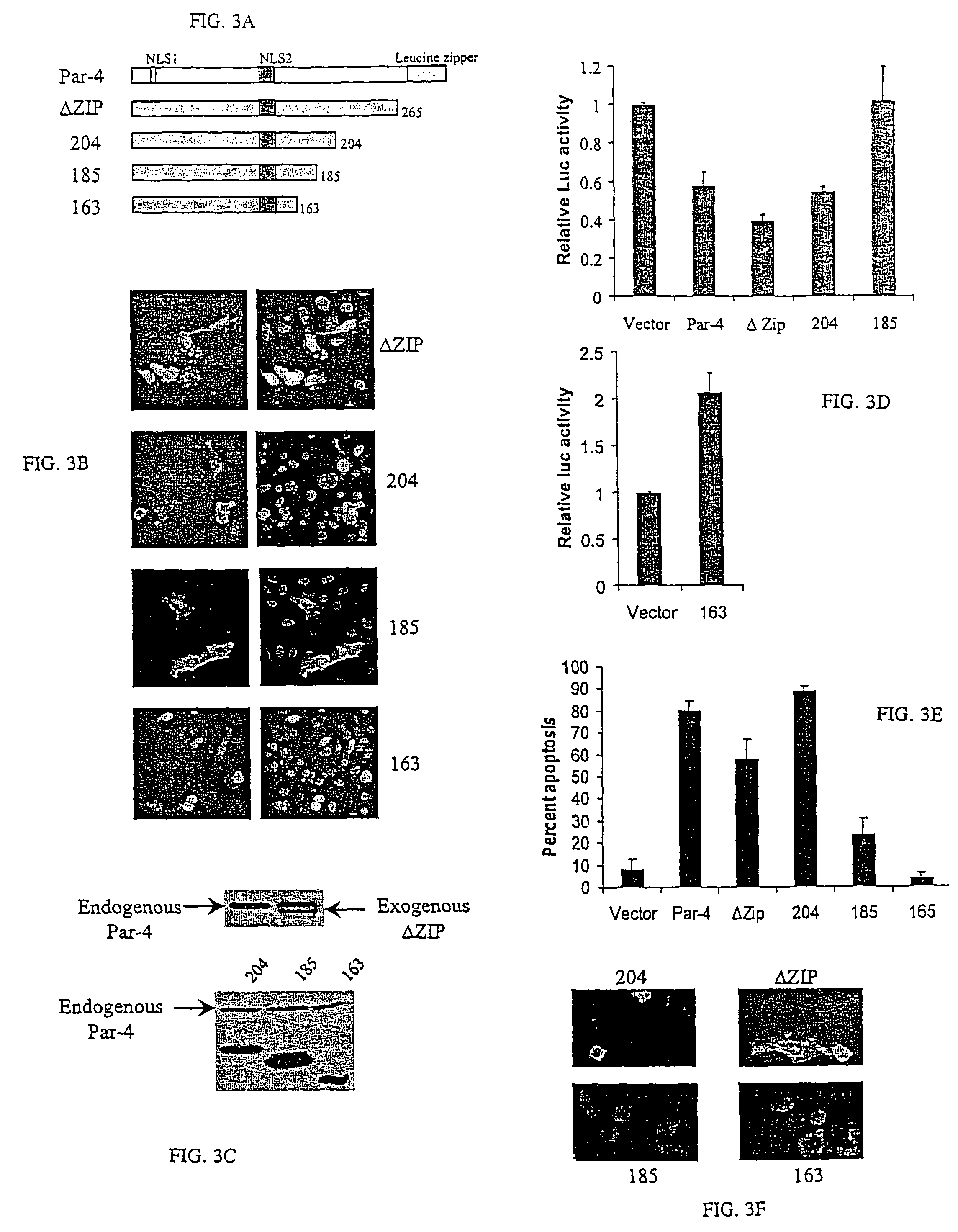Identification of a unique core domain of Par-4 sufficient for selective apoptosis induction in cancer cells
a core domain and cancer cell technology, applied in the field of prostate apoptosis response4 (par4) mutants, can solve the problems of cancer being difficult to treat, cancer is difficult to treat, and the treatment of cancer is not always effective, so as to reduce the size of tumors resistant
- Summary
- Abstract
- Description
- Claims
- Application Information
AI Technical Summary
Benefits of technology
Problems solved by technology
Method used
Image
Examples
example 1
Construction of Par-4 Deletion Mutants
[0092]pCB6+ vector, pCB6+Par-4, pCB6+_Zip and 163 (Par-4DCTH) were described previously (Johnstone et al., (1996). pSV(gal was a gift from Brett Spear, University of Kentucky. The RelA luciferase reporter system composed of Gal4 luciferase (Gal4Luc) plasmid (that contains four Gal4 consensus DNA binding sites derived from the Saccharomyces cerevisiae located upstream of luciferase reporter gene), and Gal4RelA plasmid (containing the yeast Gal4 DNA binding domain fused to the transactivation domain (TA1) of RelA) were both from Dr. A. Baldwin (University of North Carolina at Chapel Hill, Chapel Hill, N.C.). The GFP cloning plasmids pcDNA3.1 / CTGFPTOPO and pcDNA3.1 / NTGFPTOPO were from Invitrogen Life Technologies, CA.
[0093]Par-4 (SEQ ID NO: 1) as a template, followed by ligation in pcDNA3.1 / CTGFPTOPO and then left in the GFP plasmid or digested with XbaI and KpnI and subcloned into pCB6+.
[0094]Polyclonal antibodies for Par-4, NFkB (p65 / RelA) and Fa...
example 2
In vitro Activity of Par-4 Mutants on Cancer Cells
[0095]Androgen independent prostate cancer cells PC3 or DU145, androgen dependent prostate cancer cells LNCaP, normal primary prostatic cells PrE or PrS, NIH 3T3 fibroblast cells and NIH 3T3 Ras transformed fibroblast cells are known in the art. Androgen dependent prostate cancer cells LAPC4 were from Charles Sawyers (University of California at Los Angeles, Calif.) and MDA PCa 2b were from Nora Navone (M.D. Anderson Cancer Center, Tex.). Androgen independent prostate cancer cells LNCaP IGFBP5, which represent an isogenic derivative of LNCaP cells prepared by stable transfection with IGFBP5 expression construct, were provided by Martin Gleave (Vancouver General Hospital, British Columbia, Canada). Immortalized human prostate epithelial cells PZHPV7, and the head and neck cancer cells SQ20B and SCC66 were from Mansoor Ahmed, (University of Kentucky). The human lung cancer cells A549, H157, H838 and H460 were from John Yannelli (Intern...
example 3
Identification of the Core Domain of Par-4
[0101]Previously, NLS2 was identified as the most critical sequence for nuclear localization and apoptosis induction. To further confirm the importance of NLS2, two N-terminal deletion constructs 137332 were constructed and 148332 with either an intact NLS2 or a disrupted NLS2, respectively (See FIG. 4A). When PC3 cells were transfected with these constructs, 137332 but not 148332, was translocated to the nucleus (See FIG. 4B) and induced apoptosis. This suggested that NLS2 was critical for Par-4 function, and that the N-terminus of Par-4 was not required for Par-4 nuclear entry and apoptotic functions.
[0102]To define the minimal domain of Par-4 essential for apoptosis, additional constructs were made that began with the intact NLS2 domain at the amino terminus and with various deletions upstream of amino acid 204 (FIG. 4C). Transient transfection of PC3 cells indicated that 137195, but not 137190, inhibited NFkB transcription activity and i...
PUM
| Property | Measurement | Unit |
|---|---|---|
| median time | aaaaa | aaaaa |
| median time | aaaaa | aaaaa |
| volume | aaaaa | aaaaa |
Abstract
Description
Claims
Application Information
 Login to View More
Login to View More - R&D
- Intellectual Property
- Life Sciences
- Materials
- Tech Scout
- Unparalleled Data Quality
- Higher Quality Content
- 60% Fewer Hallucinations
Browse by: Latest US Patents, China's latest patents, Technical Efficacy Thesaurus, Application Domain, Technology Topic, Popular Technical Reports.
© 2025 PatSnap. All rights reserved.Legal|Privacy policy|Modern Slavery Act Transparency Statement|Sitemap|About US| Contact US: help@patsnap.com



